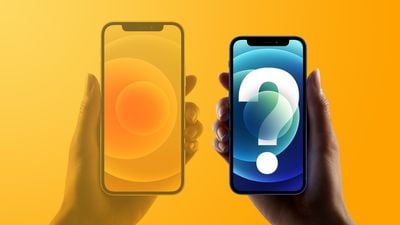
The iPhone 15 lineup is noticeably lacking in a model with a screen size of less than six inches, just two years after Apple extolled the virtues of a 5.4-inch device. So why did Apple cancel the “small” device that some iPhone customers loved?
Apple debuted the iPhone 12 mini in 2020 after years of calls from iPhone fans for the company to introduce a small-screen device with the latest features. When Apple did this, it was assumed that the small form factor would last for several years, but the device seemingly came to a premature end when the iPhone 14 lineup was released in 2022. When the iPhone 15 lineup was released, Apple retired it. The last remaining device with a “mini” form factor.
Concerns first arose when the iPhone 12 mini appeared to not be selling as well as Apple had hoped, accounting for just six percent of iPhone 12 sales in the US in October and November 2020, according to data compiled by Consumer Intelligence Research Partners (CIRP). . Counterpoint Research reported that the iPhone 12 mini represented just five percent of all iPhone 12 sales in the US in the first half of January 2021.
Morgan Stanley believes Apple has chosen to reduce production of the iPhone 12 mini by 2 million units to create more manufacturing capacity for the more popular iPhone 12 Pro. This was reflected in a Taiwanese report, citing sources in the supply chain, that said strong demand for the iPhone 12 Pro models in China has prompted Apple to increase its supply of more expensive devices.
Even more strikingly, JP Morgan Chase claimed that Apple has completely halted production of the iPhone 12 mini in the second quarter of 2021. While the iPhone 12 mini sales reports did not bode well for the iPhone 13 mini, Apple is planning its iPhone production and supply chain operations. Long before launch, meaning that the iPhone 13 mini was already on its way to production by the time the issues with iPhone 12 mini sales became apparent.
In April 2022, CIRP released further data indicating that the iPhone 13 mini represents just 3 percent of iPhone 13 sales – half of the iPhone 12 mini sales. These continued weak sales are likely the main reason behind the demise of the “mini” form factor iPhone.
With the iPhone 14 lineup, Apple chose to replace the “mini” device with an all-new “Plus” device that is compatible with the 6.7-inch screen size of the advanced “Pro Max” models. In some ways, the “Plus” mirrors the “mini,” offering the latest iPhone features in a different display size. Instead of offering a small, lightweight screen option, customers can now opt for a larger battery and a 6.7-inch screen — the same size that “Pro Max” customers have been accustomed to for more than five years, now priced at $1,199 — but at a more accessible price of $899.
Less than a week after the launch of the iPhone 14, Apple analyst Ming-Chi Kuo said demand for the two devices had been “lackluster,” with pre-order results worse than the third-generation iPhone SE and iPhone 13 mini. He went so far as to claim that “Apple’s product retail strategy for standard models failed this year” and believes Apple has shelved plans to increase production of the two devices. Supply analyst Ross Young said panel orders for the iPhone 14 were down 38 percent versus the iPhone 13 at the same time last year, while in the resale market, the iPhone 14 and iPhone 14 Plus lost value twice as quickly as the iPhone 13 mini. And iPhone 13 from last year.
Other reports like Digi Times It overwhelmingly presented the same picture of declining sales of the iPhone 14 Plus, to the point where Apple had to cut production, suggesting that the decline in sales of the iPhone 12 mini and iPhone 13 mini may not have been due to the size of the device after all. It’s not yet clear whether the iPhone 15 Plus will fare any better.
There are no plans to revive the iPhone’s “small” form factor in Apple’s product line, according to rumours. The smallest iPhones in the works, such as next year’s iPhone 16 and the fourth-generation iPhone SE, are expected to feature 6.1-inch displays. Conversely, some future devices, such as the iPhone 16 Pro and iPhone 16 Pro Max, are expected to grow larger, increasing to 6.3 and 6.9 inches, respectively.

“Certified food guru. Internet maven. Bacon junkie. Tv enthusiast. Avid writer. Gamer. Beeraholic.”






More Stories
Nintendo is launching a music app with themes from Mario and Zelda, and more importantly, a Wii Shop channel
The Google Pixel Tablet 3 will take another step towards replacing your laptop
Apple still excels at building the best computers